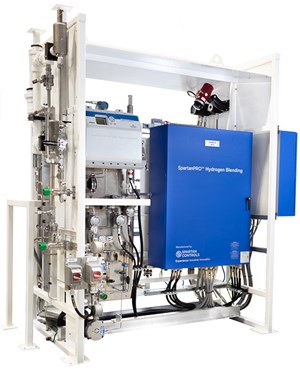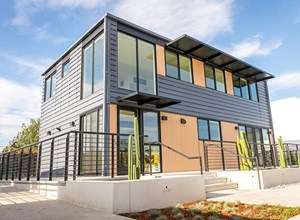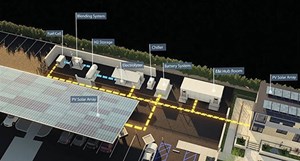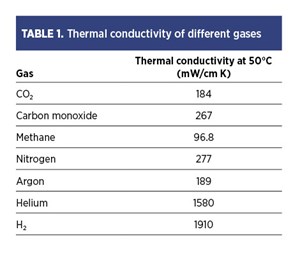Articles
Creating a zero-emissions H2-powered neighborhood
Special Focus: Hydrogen Infrastructure Development
B. BURKOWSKY, Caltrol Inc., Irvine, California; and S. HARRIS, Emerson, Longmont, Colorado
The drive for a renewable, carbon-free energy transition has reached individual residences and consumers with small-scale hydrogen (H2) production and utilization. H2 use is growing rapidly globally to provide a clean energy source in various industrial applications; however, its use in the residential market has been limited. This situation is changing as utility companies worldwide are exploring delivery solutions to enable their customers to use H2 for emissions reduction.
For example, the authors’ companies are working to deploy digital technologies, software and services to demonstrate the resiliency and reliability of a H2 microgrid for southern California utility consumers.
The project is one of the first of its kind in the U.S., and it showcases how the carbon-free gas made using renewable electricity can be consumed in pure form or blended with natural gas to fuel future clean energy systems. Now operating, this demonstration project provides a path to reducing emissions from home energy use—another critical contribution to a cleaner energy future.
Emissions are the issue. Electric and natural gas production and distribution systems provide a reliable source of low-cost energy to billions of residential customers worldwide, but more effective and efficient appliance designs can reduce emissions at use points.
Electricity is typically generated by large plants and facilities and distributed to residential customers. This system works well considering reliability and cost, but limitations arise due to various factors. Fossil-fueled generation results in emissions, and there are limits regarding how much power can be produced by hydro, geothermal, nuclear and other low- or zero-carbon energy sources. Solar and wind power are alternatives in some locales, and stored H2 can smooth out the intermittent nature of output from these sources.
Natural gas is the cleanest burning of all fossil fuels due to its high H2 content of four H2 atoms for each carbon atom. It is the lowest cost and most plentiful energy source for many residential applications, including space heating, water heating, clothes drying and cooking.
Alternative sources of energy, primarily electricity, are much more expensive for these residential applications, often rendering them impractical. As seen in many natural disasters, the natural gas distribution system is much more resilient than the electrical distribution system, primarily because it is underground and thus protected from most storm damage. Despite these advantages, even the most modern natural gas-fueled appliances produce carbon dioxide (CO2) emissions.
Cleaner energy generation and use. The southern California project aimed to provide a working example of what a future residential energy system could look like (FIG. 1). The nearly 2,000-ft2 home is outfitted with solar panels, a power storage battery bank, an electrolyzer to convert solar energy to renewable H2 and a fuel cell to supply electricity. H2, produced at the site, can also be blended with utility-provided natural gas and used in the home’s heat pump heating, venting and cooling unit, water heater, clothes dryer and stove.
Control hardware, instrumentation and software monitor gas flow and precise gas concentrations. The project is effectively a small-scale microgrid, able to reliably deliver power in multiple forms. Such installations can provide long-duration energy storage, along with low-carbon distributed power. This system could provide clean energy to residential neighborhoods and businesses when constructed on a larger scale.
The control system balances energy supply and demand within the home, and the system contributes energy to the local grid, when possible, either as electrical power or by blending H2 into the natural gas distribution system, all with zero-carbon emissions.
The authors’ companies delivered advanced process control systems, as well as:
- Safety instrumented systems
- Electronic marshaling technology
- Instrumentation
- Final control elements
- Analytics solutions.
These technologies work together to help meet environmental, social and governance (ESG) goals and safety requirements. The project is powered entirely by electricity generated by a photovoltaic array. On a sunny day, the array provides immediate power requirements, and additional capacity is used to charge a large stationary battery, and/or feed power into an electrolyzer to manufacture green H2.
This arrangement offers multiple energy supply and consumption options:
- The residence can store compressed H2 and feed it into appliances (e.g., water heater, clothes dryer) modified to burn pure H2, or blend it with natural gas for use with standard appliances.
- If additional electric power is needed (e.g., night), it can be drawn from the battery, or stored H2 can be fed into a fuel cell to create electric power. A fuel cell creates heat and electricity, so maximum efficiency occurs when the heat is used for hot water or warming the residence (FIG. 2).
Operating an electrolyzer and internal blending station requires consumption to be monitored closely and the flow must be controlled across a high turndown range. Depending on the number of natural gas-consuming applications in use at any given time, the amount of H2 added may be at maximum or turned down to virtually zero. Maintaining a consistent H2 feed rate requires monitoring the natural gas feed flow and pressure so the blending system can calculate the maximum addition rate.
An analyzer must be used to determine the composition after mixing. Unfortunately, relevant analyzer technologies may be fast by analyzer standards but are slow compared to a flowmeter, and the lag time is too long for controlling a loop if loading changes frequently. For example, this can happen if a large appliance consuming a significant proportion of the total flow starts or stops, as with a clothes dryer.
A more sophisticated approach (FIG. 3) is used in this case for monitoring the flow of both natural gas and H2 to determine the appropriate ratio, with an analyzer (FIG. 4) verifying the mix. This approach is especially critical if gas supplied to the residence already has H2 blended with it from other sources upstream.

This arrangement requires multiple flowmeters, pressure transmitters, control valves and an analyzer, all supported by an automated control system. It reads the process variables, makes all necessary calculations and adjusts various valves to ensure a desired mixture, confirmed by the analyzer (TABLE 1). It must adjust quickly to load changes, even when they can be unpredictable and abrupt. The control system reliably performs all these functions, providing high efficiency for the entire system.
Takeaway. These residential and small neighborhood-scale facilities can generate, store and transmit electricity with zero-carbon emissions, which will be critical for meeting sustainable power demand. The authors’ companies facilitated a shorter startup, while ensuring the safety and reliability of the systems necessary to make this approach practical.
Although it is just a single home, this project shows what is possible as its solutions can be implemented all at once for new construction or they can be retrofitted individually for existing residences. Either approach empowers consumers to play their part in reducing emissions, following the actions of many industrial and commercial plants and facilities worldwide.H2T
About the authors

BRIAN BURKOWSKY is the general manager of advanced solutions at Caltrol, an Emerson Impact Partner. He works with the Advanced Solutions group to apply its extensive industry solutions capabilities—including IP-centric applications, integrated solutions, engineering and manufacturing capabilities for process industries—to solve customer problems. Burkowsky earned a BS degree in instrumentation technology from the Saskatchewan Polytechnic Institute.

SETH HARRIS is the director of sustainability sales in the Americas for Emerson. He has more than 17 yr of experience with Emerson across multiple industries and various sales functions, including product, software and data management, with a personal foundation built on environmental sustainability, bringing a unique depth to society’s decarbonization efforts. Harris earned a BS degree in chemical engineering from the University of Colorado.





